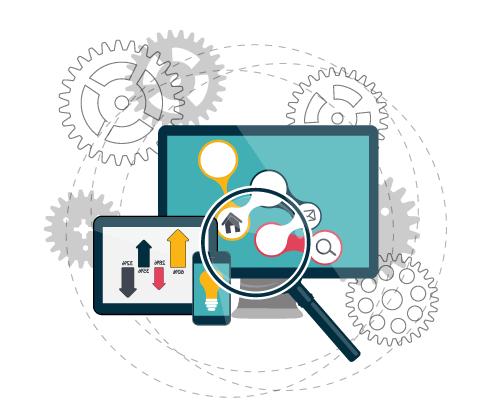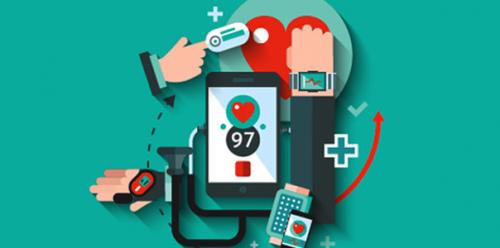How Does Internet-of-Things Drive The Industrial Digital Transformation
How IoT can digitally transform industrial operations and growth using inter connected devices and analysis of data – Importance of actionable insights.
The cost of low-power networking technologies has reduced drastically in the recent times. It is now much easier to equip tangible objects such as engines, equipment and manufacturing plant devices with sensors and collect valuable metricized information pertaining to factors such as the location, temperature, vibrations, flow rate etc. from various types of devices. With IoT, it is now possible to have “things” share data with other “things” or physical objects using networks and data centers.
Moreover, using IoT it is now possible for almost any aspects of our environment – Whether it be natural or human-made systems – Or a collection of different types of devices to be fitted with sensors, so they can connect, communicate and interact with each other. This increased connectivity will drastically change how we work and do our business.
The importance of actionable insights
What’s driving IoT today? Why is it becoming popular even more as of now? Actually, it is a convergence of three key technology shifts that push IoT deployments:
1. Huge explosion of voluminous data generated by devices
Inter-connected computing devices are growing at a rapid pace. Globally, several billion such connected devices are in use today, and the number is likely to rise even more in the near future. These types of devices, such as smart meters, radio-frequency identification tags, appliances, wearable tech, connected cars and a lot more are creating massive amounts of data useful for gaining valuable and critical insights about the environments they operate in.
2. Popularity of “the Cloud” as a growth engine
Businesses can be more agile and flexible in the market and respond quickly to changing market trends using the benefits offered by cloud platforms. Further, new solutions can be designed and developed quickly, at affordable rates, and businesses can connect more easily with people at a fraction of the cost as compared to doing the same activities using traditional technologies and methods. It is very easy for people to connect, collaborate and share ideas using the cloud.
3. New ways of engaging with customers and audiences
Hoardings and signage have been replaced by online videos and enticing web contents. Social media channels dominate the internet and more-and-more people are engaging with each other online to discover new opportunities and communicate with each other. The internet is enabling people to use real-time information and make informed decisions.
Moreover, the proliferation of smartphones have further reduced physical distances and facilitated customer engagement. Now, there are more convenient and cheaper ways for people to research their needs and buy exactly what they want – And spend less while buying them.
Back in 2008, IBM recognized the vast potential offered by IoT and aggressively helped potential clients to tap its vast potential. IBM introduced the idea that the world is rapidly becoming more instrumented, interconnected and more intelligent.
Instrumented
Using low-cost smart sensors and mobile devices to capture massive amounts of data from the workings of the physical world and convert them into measurable “data points.”
Interconnected
Joining different parts such as networks, applications and data centers of a core system so the “devices” can “speak” to each other thus turning data into valuable information.
Intelligent
Information is analyzed real time to generate real-time actionable insights and make informed decisions.
IoT helps to link the physical world with the digital world. The massive amounts of data and valuable insights created by analyzing it helps businesses to learn more about the particular ecosystem within which the devices are located. The insights aid to formulate new delivery models and drastically change how businesses operate and churn profit.
Unfortunately, while using IoT, about 90 percent of the total data is not captured, studied or utilized. Secondly, about 60 per cent of actionable data loses its significance and value over time. So very little data is transformed into valuable insights. Thus the true potential of IoT is rarely tapped by businesses. This is because businesses don’t have enough analysis tools to make optimum use of the data generated through IoT processes and also because managements often feel satisfied with the negligible benefits they are experiencing using IoT. It is primarily the “want” aspects that prevent full utilization of IoT processes.
It’s not just the devices that generate valuable data, but also the intelligence that is built to consume that data, analyze it and generate actionable insights.
Digital transformation of industry

The digital age has brought in a whole new way of thinking about how commodities should be manufactured and how operations should be controlled. Changing labor rates in emerging economies, logistic challenges and increasing energy costs are rapidly influencing global production and distribution channels. Advances in technology, in addition to big data and analytic, the IoT, robotics as well as additive manufacturing are dynamically shifting the capabilities and value-proposition of global manufacturing. To keep pace with changing trends, businesses are required to... Read more.








Comments